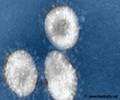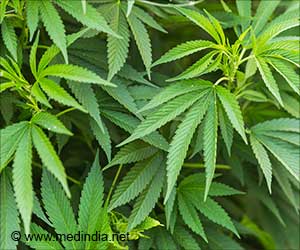The stage set now for the identication of compounds that can fight against the marked component, by the scientists at the U.S. Department of Energy's Brookhaven National Laboratory.
2002- the year of SARS (Severe acquired respiratory syndrome) that claimed around 800 lives worldwide. Sure enough, it spurred research in this field with the hope of finding methods to control the virus. Researchers at Brookhaven's department of Biology and NSLS (National Synchrotron Light Source) have successfully identified a component of the virus that new anti-SARS virus drugs can target. Scientists at the U.S. Department of Energy's Brookhaven National Laboratory have now set the stage for the identification of compounds that can fight against the marked component.
'Although vaccines against viruses are very effective, vaccines for viruses that mutate rapidly – such as the viruses that cause SARS, AIDS, and bird flu – are much more difficult to obtain,' said Brookhaven biologist Walter Mangel, the lead author of the paper. 'Even if a vaccine is available, antiviral agents are important in stopping the spread of highly infectious viruses. If antiviral agents for SARS had been available, they could have been used to contain the outbreak to the initial site of the infection.'Researchers studied the main proteinase, an enzyme used by the SARS virus during infection to cut newly made viral proteins into gene-sized, functioning pieces. They found that if the proteinase is prevented from working ,the virus infection aborts.
Previous studies have revealed that the proteinase is inactive when in the form of single molecules.
Nevertheless, once two of these molecules bind together to make a 'dimer', the enzyme becomes active, enabling reproduction of the SARS virus.
The challenge for researchers, and the focus of the Brookhaven study, was to determine the concentration at which individual proteinase molecules form active dimers. Knowing this concentration, for which estimates at other laboratories have varied greatly, would allow researchers to search for anti-SARS drugs more efficiently by ensuring that the proteinase used in tests is initially in its active form.
Using three different scientific techniques, including x-ray scattering at the NSLS, the Brookhaven researchers obtained almost identical values for this concentration. Now, with the crucial value being narrowed down to a precise range, researchers can focus on finding compounds that bind to the active form of the enzyme.
One way to obtain compounds that bind to a proteinase is via high-throughput screening. Chemical libraries containing tens of thousands of small compounds are available that can be searched for effective drugs against various diseases. Small amounts of a target, e.g., an active viral proteinase, are placed in tiny wells in a plate, and a different compound from the library is added to each well.
However, for this screening process to work, the SARS proteinase inserted into the wells has to be active to begin with. Knowing the concentration range for dimer formation will therefore help researchers in their search for a compound to stop the virus. 'Now that the stage is set, high-throughput screening can begin,' Mangel said. 'Hopefully, it will yield an antiviral agent that can be stockpiled before a virulent strain of the virus reappears.'
Source-Eurekalert
SRM/ASH/L







